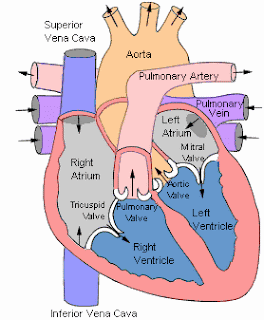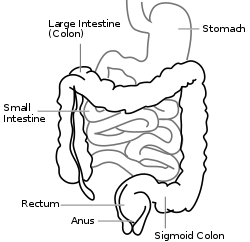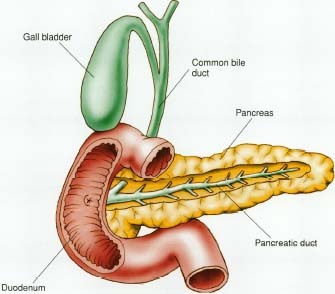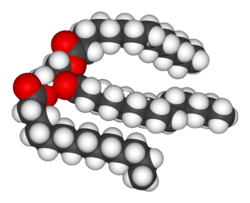
|
so sleep alone tonight
My name is ღ||汇嘉||SOPHIAღ. Give me presents! On 22061996 :D [Cancer] [CHRISTIAN] PLMGSS 2.1 I love Aaron (: |
|
|
about this blog
This blog was opened by (SOPHIAARON) to accomodate (SOPHIA)'s Science journal.Do enjoy your stay here, and don't take what's not yours! tagboard
ShoutMix chat widget br> affiliates
DORCAS!!!(: MELISSA LISA LISHAN RACHEL RADIENT JANELLE JASLEY SEOWHWEE STELLA STACEY SARAH SHIYU JOYI Bue. Bue. Bue. archives
Videos. (:
-------------Physics------------Liquifaction. How to get out of a quicksand. Math Definitions : What Is Terminal Velocity. Newton's 3 laws of motion. Titration Technique using a burette How to use a pipette. Indroduction to Frictional force. Tacoma Bridge Collapsed! ---------------Chemistry---------- Forensic Video Periodic table song(: Crystal structures: graphite and diamond Chromotography- Separation of MIxtures Separation: Iron from Salt & Sand Mixture Steam Distillation Fractional Distillation Video Video Video Video Video Video Video Video Video Video Video Video Video credits
Design: doughnutcrazyIcon: morphine_kissed Do credit accordingly if you changed the icon. |
Biology 19
 The flow of blood (: Biology 18
 Here are the functions of different parts of our human heart (I'll be going in a clockwise manner): 1) Superior Vena Cava: It returns de oxygenated blood from head and arms to heart. 2) Pulmonary Veins: Carries oxygenated blood from lungs to heart. 3) Right atrium: Receives de-oxygenated blood 4) Tricuspid valve: Prevents back flow of blood to the right atrium. 5) Right ventricle: Pumps blood to lungs via pulmonary artery 6) Inferior vena cava: Returns de-oxygenated blood from lower limbs and organs to the heart 7) The cardiac muscle functions with the help of its cardiac cells. These cells are responsible for the contraction of this muscle and sending blood to the atria and ventricles. That in turn, reaches the blood vessels of the circulatory system. 8) Left ventricle: Pumps blood to all parts of the body except lungs via aorta. 9) Bicuspid valve (Mitral valve): Prevents back flow of blood to the left atrium. 10) Semi-lunar valve (Pulmonary valve): Prevent back flow of blood 11) Pulmonary vein: Carries oxygenated blood to the heart from the lungs. 12) Pulmonary artery: Carries de-oxygenated blood from the heart to the lungs. 13) Aorta: The biggest artery in the whole body. Carries oxygenated blood to rest of the body. --> Chordae Tendinae: Tendons tighten to prevent valves from flapping backwards ( prevent back flow of blood to the atrium) reference: Notes. Biology 17
An artificial heart? Check this out (: Biology 16
 This is a picture of how our heart look like.
Biology 15
Our Wonderful Heart (: Our heart, is the most amazing organ in our body. It works 24 hours, beating at every second of our lives. It doesn't take break, and it doesn't rest. Even when we're sleeping. Here is a video on how our heart works (: A more elaborated written version will be up soon (: Biology 14
Function of the epithelial cells: --> It is to secrete mucus --> further thrown into micro-villi. --> Lacteal: Transport fatty acids and glycerol. --> Blood capillaries: Transport glucose + amino acids. Biology 13
In the previous posts, there's a video about the Villi.More about the villi:
--> The inner walls of the small intestine is thrown into folds called villi. --> It provides a large surface area for quicker absorption of digested food into the blood. --> And each epithelial is further thrown into micro villi. --> Hence, the walls of the small intestine (ileum) is definitely not smooth. --------------------------------------------------------------------------------------------------------- How is the villi adapted to absorb food? --> It is further thrown into micro-villi, increasing the absorption area. --> Having a large surface area, it allows quick absorption of digested substances. --> Each villus is also closely connected to a network of blood capillaries which sends digested food substances away quickly, forming a diffusion gradient.
Biology 12
Introduction to the villi (:More to come (:
Biology 11
LARGE INTESTINE (colon) The large intestine is the second to last part of the digestive system—the final stage of the alimentary canal is the anus —in vertebrateanimals. Its function is to absorb water from the remaining indigestible food matter, and then to pass useless waste material from the body.[1] This article is primarily about the human gut, though the information about its processes are directly applicable to most mammals. The large intestine consists of the cecum and colon. It starts in the right iliac region of the pelvis, just at or below the right waist, where it is joined to the bottom end of the small intestine. From here it continues up the abdomen, then across the width of the abdominal cavity, and then it turns down, continuing to its endpoint at the anus. The large intestine is about 1.5 metres (4.9 ft) long, which is about one-fifth of the whole length of the intestinal canal. taken from: http://en.wikipedia.org/wiki/Large_intestine Biology 10
Next up.....DUODENUM (:  This is the first part of the Small Intestine and it digests ALL classes of food, hence making it the most hardworking organ in the entire digestive system. Nonetheless, all organs have to work together to form a healthy and working system (: In the duodenum, partially digested food will be passed on from the stomach. As I mentioned earlier, all classes of food will be digested: Fats, Carbohydrate and Protein. The enzymes present in the duodenum is produced by the pancreas by the the pancreatic duct. The pancreatic juice contains these enzymes: Trypsin, Pancreatic amylase, lipase and maltase. Bile salt is excreted by the liver to emulsify fats into fatty droplets for lipase to act on. Let's analyse each enzyme. 1) Pancreatic amylase : We might ask, why do we still need maltose in the duodenum since we have the salivary amylase in our mouths? Yes indeed, we do have salivary amylase in our mouths. However, do we all chew our food properly? The answer is definitely no! Not all starch present in the food is able to be digested by our salivary amylase as food is often swallowed before being chewed and digested. Therefore, the pancreatic amylase is definitely required to digest the starch that was yet to be digested. 2) Maltase: After starch is broken down into maltose by the pancreatic amylase, maltase acts on the maltose to digest it to become simple sugar. i.e. glucose, sucrose or fructose. This enzyme is only present in the S.I. 3) Trypsin: Why is trypsin required when protein is already digested in the stomach? The reason is, sometimes, proteins are not broken down directly into amino acids. There are sometimes broken down into peptides by the pepsin in the stomach. Hence, trypsin is needed to digest the peptides/proteins completely into amino acids for absorption. This enzyme can only survive in alkaline conditions of pH9. Therefore, the trypsin that we eat in our food will be denatured and when it passes the stomach, it is too acidic for it to withstand. 4) Lipase: Lipase are enzymes which act on fats. However, before it digests fats into fatty acids and glycerol, it is first being broken down by the bile salt which is produced by the liver into fatty droplets. This process of emulsification increase the fat digestion rate (: Biology 9
A video that summarises what I posted the previous post about digestion in Stomach. Biology 8
 Above is an illustrated diagram of our stomach (Human stomach). Firstly, stomach is an elastic, muscular bag with thick and well developed stomach wall. --> It churns food into liquid chyle. --> It also produces an enzyme called pepsin as well as hydrochloric acid. --> Pepsin breaks down protein to amino acids. In some cases, protein are broken down into polypeptides/peptones, further digestion will take place in the duodenum. So, what's the use of hydrochloric acid then? --> Basically, it has 2 important functions. --> Firstly, it provides a suitable medium of pH2 for pepsin to work. Which means, the optimum pH level for pepsin to work well is pH2. --> Secondly, it also kill foreign particles that is present in the stomach. Why is the stomach so acidic? --> This so as the stomach walls produces hydrochloric acid. Also, the stomach ONLY digests PROTEIN. Nothing else. However, mechanical digestion still takes place in the stomach. Biology 7
How fats are broken downFirstly, when we chew our food, the food is broken down into smaller pieces. Hence, saliva has more area to act on. However, our saliva only contains salivary amylase, which cannot break down nor digest fats. Fats digestion will take place in the small intestine, the duodenum. In the duodenum, all classes of food are being digested. The bile will produce bile salt and it will be transported to the duodenum through the bile duct. The bile salt break down the fats into fatty droplets, *it does not digest fats*. This process is called emulsification. The pancreas will subsequently produce pancreatic juices, which contains several digestive enzymes. One of the enzymes are lipase. Fatty droplets will be digested by the lipase and into glycerol and and fatty acids. The ratio is 1:3 respectively. *Note that bile IS NOT an enzyme* (:
Biology 6
FATS
--> They are important sources and storage of energy that can provide 2X as much energy as carbo. --> It is made up of Carbon, hydrogen and oxygen. = CHO   According to wikipedia, Fats consist of a wide group of compounds that are generally soluble in organic solvents and largely insoluble in water. Chemically, fats are generallytriesters of glycerol and fatty acids. Fats may be either solid or liquid at room temperature, depending on their structure and composition. Although the words "oils", "fats", and "lipids" are all used to refer to fats, "oils" is usually used to refer to fats that are liquids at normal room temperature, while "fats" is usually used to refer to fats that are solids at normal room temperature. "Lipids" is used to refer to both liquid and solid fats, along with other related substances. The word "oil" is used for any substance that does not mix with water and has a greasy feel, such as petroleum (or crude oil) and heating oil, regardless of its chemical structure.[1] Fats form a category of lipid, distinguished from other lipids by their chemical structure and physical properties. This category of molecules is important for many forms of life, serving both structural and metabolic functions. They are an important part of the diet of most heterotrophs (including humans). Fats or lipids are broken down in the body by enzymes called lipases produced in the pancreas. Examples of edible animal fats are lard (pig fat), fish oil, and butter or ghee. They are obtained from fats in the milk, meat and under the skin of the animal. Examples of edible plant fats are peanut, soya bean, sunflower, sesame, coconut, olive, and vegetable oils. Margarine and vegetable shortening, which can be derived from the above oils, are used mainly for baking. These examples of fats can be categorized into saturated fats and unsaturated fats.
Some example of fats are: Butter, milk and cheese (:
reference: http://en.wikipedia.org/wiki/Fat Biology 5
CarbohydrateCarbohydrate is provides body cells with the energy that they need. Examples are: Polysaccharide: Starch, cellulose, glycogen. Disaccharide: Maltose, sucrose and lactose. Monosaccharide: Galactose, fructose and glucose. --> Monosaccharides are the simplest form of sugar and cannot be broken down any further. --> As our body do not have cellulase, cellulose cannot be broken down, hence they will be egected from our body. Starch is broken down into smaller pieces when we chew and digested into maltose through our salivary amylase in our mouth. Further digestion takes place in the small intestine, the jejunum. The end product of starch is glucose and will be assimilated. --> Excess carbohydrate in our body are turned into fats and glycogen. Glycogen is stored in livers and muscles. While fats are stored in the adipose cells. They will only be used if the carbohydrate intake is low. Biology 4
The nutrients that keep us healthy and fit are: Carbohydrate, proteins and fats.This post will be mainly about proteins. Subsequent posts will be about carbo and fats. Protein
Firstly, what are proteins? Proteins are the main substances used for the growth of new cells and the repair of damaged tissues. They also provide energy when the body lacks carbohydrates and fats. Excess protein cannot be stored as it is toxic. They are removed through deamination (urination) and egestion. Proteins are made up of: Carbon, Oxygen, Nitrogen (and sulphur). --> Which element present in urial proves that it is not from carbohydrate or fats? -> Nitrogen will prove it to us (: In our body, protein is broken down mainly in our stomach. Pepsin(pH2) is found in the stomach and breaks protein down into peptones/amino acids. The amino acids video Biology 3
Above is a detailed diagram of our digestive system. http://www.teachnet.ie/farmnet/images/Digest3.gif Biology 2 - Our saliva
 |



